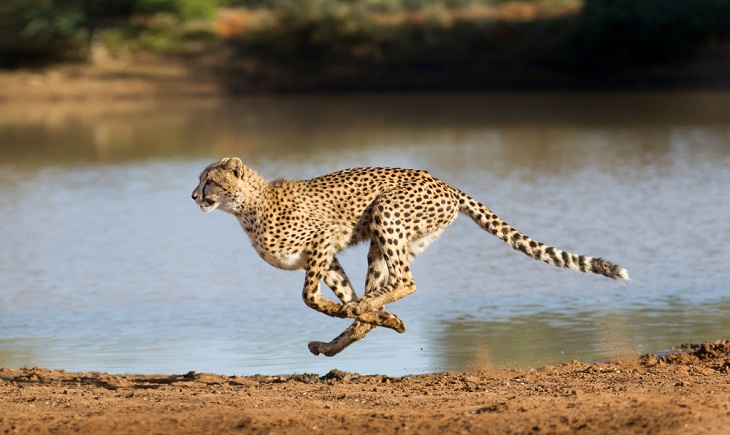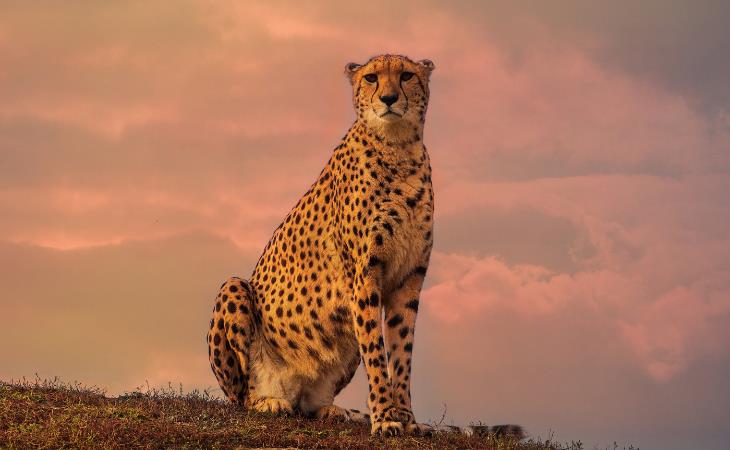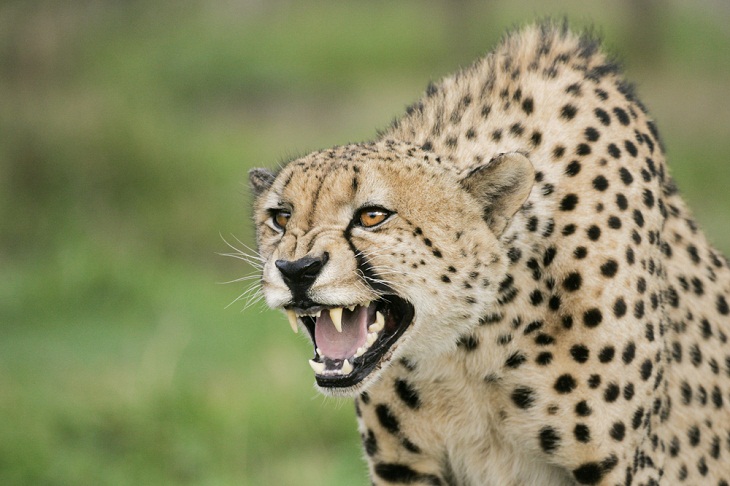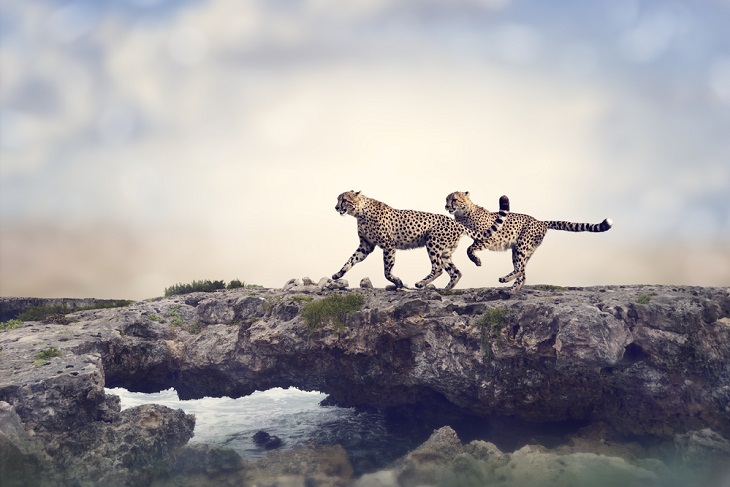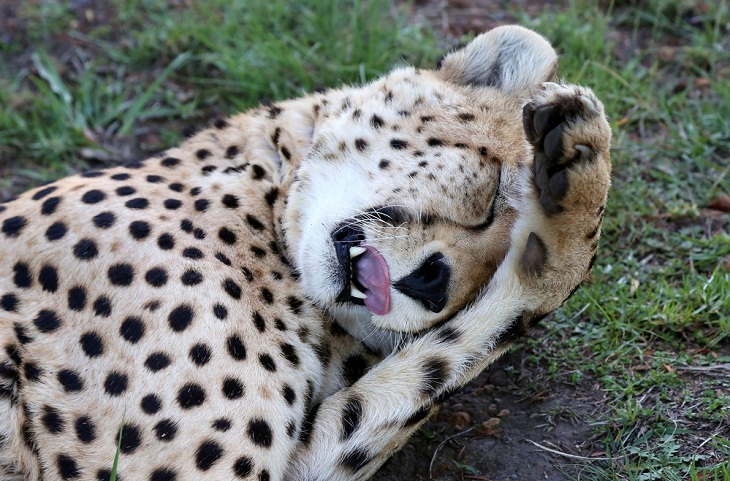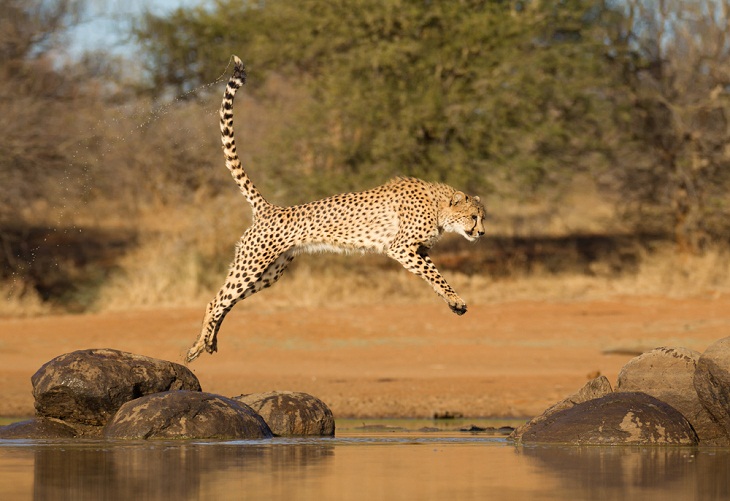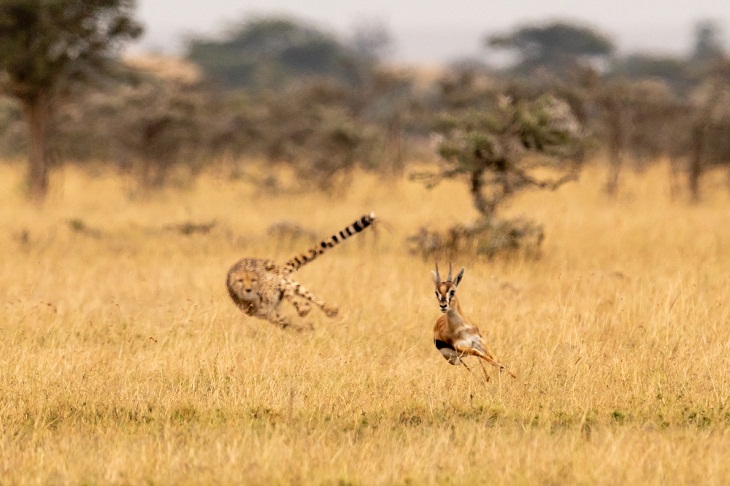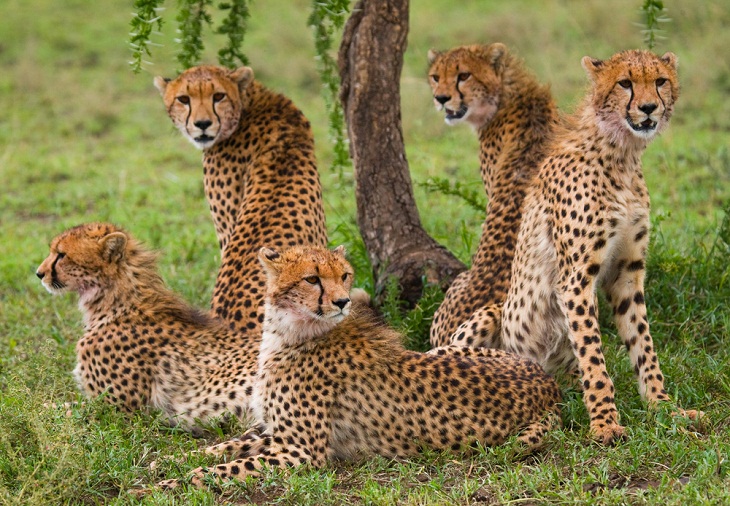Since cheetahs depend on fierce speed to capture prey, they boast an enlarged heart, enlarged liver, adrenal glands, bronchi, and lungs, along with large arteries that circulate oxygen through their blood efficiently. They have large nostrils and extensive, air-filled sinuses too that allow for increased oxygen intake.
The cheetah's uniquely modified respiratory system allows it to shift from a normal rate of 60 breaths per minute to 150 breaths per minute while racing.
3. Unlike Other Big Cats, Cheetahs Don’t Roar
Unlike other big cats (such as lions, tigers, leopards, and Jaguars), cheetahs don’t roar. Instead, they usually meow or purr. They also make chirps, churring sounds, or high-pitched barking sounds as forms of communication.
Lions, tigers, leopards, and jaguars are able to roar because they have a ligament instead of the epihyal bone in the voice box. This ligament can be stretched to create a wider pitch range and therefore, a larger sound-producing passage. Cheetahs, on the other hand, are restricted in the variety of noises they can produce, including the capacity to roar, due to their fixed voice box and split vocal cords.
Cheetahs purr to self-soothe and calm down. They make chirping sounds when happy or content. When they feel threatened, they moan, growl, and hiss to deter potential attackers.
4. The Cheetah Is the Oldest Cat on Earth
Cheetahs belong to the genus Acinonyx, which means "unmovable nail" in Greek. Scientists believe they are the last living member of this genus, which has existed for around 5 million years. This makes them among the oldest cat species. The oldest cheetah and cheetah-like fossils, found in eastern and southern Africa, are approximately 3.5 to 3 million years old.
It is interesting to note, however, that although cheetahs were once considered a separate subfamily, detailed DNA analysis has found them to be related to pumas (Puma concolor) and jaguarundis (Puma jagouaroundi). This group diverged some 6.9 million years ago. Clearly, this big cat has been around for a long time on our planet. Long before they were used as pets in ancient Egypt and as hunting companions in the Middle East during medieval times.
Cheetahs are thought to have originated in North America before moving to Eurasia and Africa, according to scientists.
5. Cheetahs Can’t Fully Retract Their Claws
A cheetah’s claws are semi-retractable. These claws function similarly to track cleats in that they grab the ground for traction while pursuing prey at great speed. Other big cats retract their claws in order to sneak up on prey. Cheetahs are, in fact, the only cats that cannot fully retract their claws.
6. Its Long Tail Acts as a Rudder
The cheetah’s long, muscular, black-tipped tail has a flat surface, like a rudder. By swinging its tail from side to side, the cheetah can control its steering and stay balanced during sharp turns at high speeds. When the cheetah wants to turn, it simply guides itself in the appropriate direction using its tail.
7. Cheetahs Dine On Small Animals and Don’t Drink Much
Cheetahs have slim, lightweight bodies with long, slender limbs. Unlike lions, tigers, or leopards, they can’t bring down large prey and, therefore, prefer small animals they can easily chase and kill. Small antelope, including springbok, steenbok, duikers, impalas, and gazelles, are their favorites, along with rabbits, birds, and rodents. They also prey on the calves of larger herd animals.
To survive, cheetahs must finish their meals quickly before larger or stronger animals like lions, hyenas, or leopards sneak up on them and force them to abandon their food.
Interestingly, while cheetahs are fast animals, they only need to drink water every three or four days. In fact, they can go for 3 to 10 days without drinking water. Cheetahs sprint in short spurts to preserve energy and rest for extended durations following a successful hunt. The majority of the water they require for survival is obtained from their prey's bodily fluids.
8. There Are Five Different Subspecies of Cheetahs Worldwide
As we mentioned above, the cheetah is the only species in its genus, Acinonyx. There are five subspecies of cheetah belonging to this genus:
* East African (Tanzanian) cheetah
* Northwest African cheetah
* South African cheetah
* Asiatic cheetah
* Sudan cheetah
The Asiatic and Northwest African cheetahs are listed as severely endangered. The other three have larger populations but have seen a decline in numbers in recent years.
The Tanzanian cheetah is the biggest cheetah subspecies, reaching 110–135 cm (43-51 inches) from head to tail. After the Northwest African cheetah, it is also the second-palest subspecies. The tint of the coat can range from yellowish-white to brown.
Share this post with friends and family!

